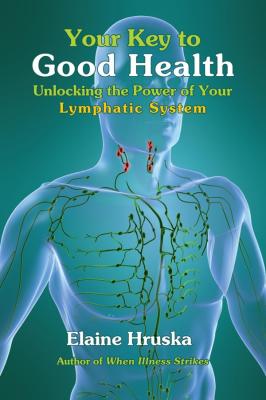ТОП просматриваемых книг сайта:
Your Key to Good Health. Elaine Hruska
Читать онлайн.Название Your Key to Good Health
Год выпуска 0
isbn 9780876048498
Автор произведения Elaine Hruska
Жанр Эзотерика
Издательство Ingram
INTRODUCTION
Why a book on lymph? This rather unexplored and until lately poorly understood system of the physical body has remained mysterious and largely ignored for centuries. Even in the 1930s, when Edgar Cayce was busy carrying on his life’s work of giving readings, the lymphatic system was considered off-limits not only for physicians but also for physical therapists and massage practitioners. If clients or patients, for example, presented themselves with swollen lymph nodes in their necks, the therapist was taught to refrain from massaging or even touching the area. It was believed or thought by the medical community that palpating the swollen nodes or surrounding areas would spread bacteria and viruses, thus increasing infection throughout the body of the client and, as a result, worsening the condition. Because of this mistaken belief and taboo plus lack of knowledge, the lymphatic system was to a great extent disregarded by health care professionals and therapists who did not want to create additional sickness in their clients. Until recently it was common for children with swollen neck nodes or tonsils to have them surgically removed. Spleens and appendixes were likewise removed, their value as a component of the body’s defense system not being discovered until later.
That interest and concern in this topic have gradually increased during this present time period (when individuals are choosing and demanding a more holistic approach and are willing to shoulder some responsibility for the onset of their illness) is also demonstrated by the amount of material covered in anatomy and physiology texts. In the mid-1980s, when I attended massage school, the textbook devoted eighteen pages to a chapter entitled “The Lymphatic System”; however, seven of those pages contained full-page illustrations. Some years later, the lymphatic system merited thirty-seven pages with half- or full-page illustrations and charts covering twelve of those pages. Why this shift in the amount of material and information? Not only is the description of lymph vessels more detailed, but the effect of that system upon the body is better understood and acknowledged. Yet the average person, as represented by those who come for services to the A.R.E. Health Center and Spa, has little knowledge or conception of what the lymph consists of or how the system operates. Unless clients have encountered a specific health problem (sometimes after surgery or an injury) of edema (swelling), they may not be aware of the condition of their lymphatic system or even pay much attention to it.
The physical readings of Edgar Cayce, in a number of instances way ahead of the times, have a lot to say about lymph and its effect on disease and health. There are, in fact, a little over three thousand references or mentions of lymph and lymphatic vessels in the total body of text. Considering that 9,541 physical readings exist, references to the lymphatic system, then, constitute nearly one-third of occurrences throughout these readings. That is quite an “honorable mention” when one realizes how scant attention was being paid to this system at the time the readings were being given, as well as little recognition and understanding of its function and operation.
One exception to this, in addition to Cayce, was a contemporary of Cayce’s, Dr. Andrew Taylor (“A.T.”) Still (1828-1917), who is considered the founder of osteopathy. In a biography, The Lengthening Shadow of Dr. Andrew Taylor Still, written by one of his students, Arthur Grant Hildreth (also an osteopath), is a description of how Dr. Still approached each patient of his, attempting to diagnose and figure out what was occurring in each one’s physical body. After going through various organs and systems in the body—much like Cayce did in his trance physical readings—and then describing the function of the arterial and venous systems, Still added:
There is still a third and most important system of vessels which accompanies the arteries and veins throughout the body. This is known as the lymphatic system. It supplies the serous fluid in which the tissue cells are bathed. It has to do with the mechanism of nutrition, absorption, and the protection of cells from harmful poisons and bacteria. p. 183
This succinct summary of what Still considered the job of the lymphatic system is mirrored as well in Cayce’s readings. In this book an attempt will be made to present Cayce’s perspective on the lymph, including the numerous health conditions resulting from its poor functioning plus helpful hints from the readings and other sources on how to alleviate and reverse these conditions. With the increase in concern and interest nowadays in the body’s immune system, along with continuing observation and study of autoimmune diseases (in which the immune system reacts against the body’s own tissues), it becomes imperative to learn how we can function more optimally and not take for granted the role the lymphatic system plays in helping us achieve stability and balance as well as relief from some of its destructive symptoms. We will no doubt be amazed and surprised at the importance of the lymphatic system in maintaining our overall health and well-being. It is hoped that these goals will be achieved in the content of this present book.
Note to the Reader: The Edgar Cayce readings are catalogued numerically. Each recipient of a reading was assigned a number to provide anonymity. The first set of numbers refers to the individual or group who received the reading; the second set represents its place in a sequence. For example, in reading 294-3, “294” stands for the person’s name, while “-3” means this was the third reading given for that individual.
When the readings

